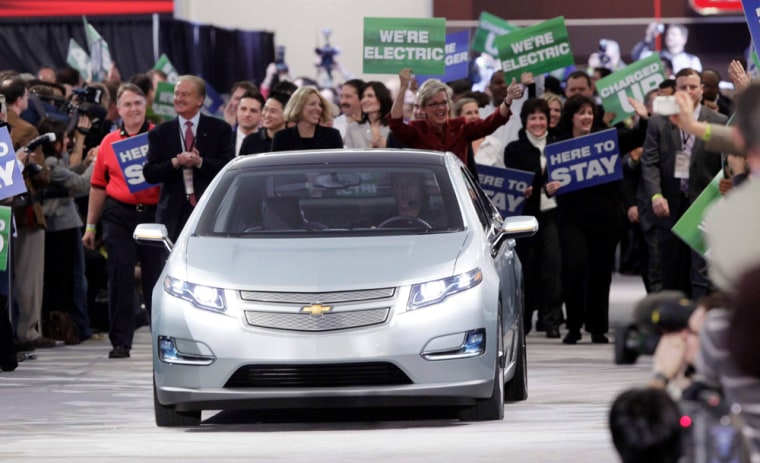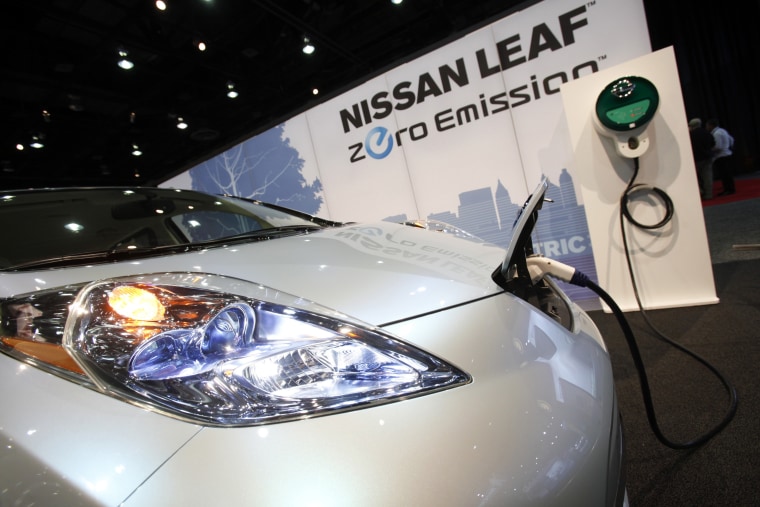To all those cities worrying about how they are going to get wired for electric vehicles: Fret not. "Range anxiety" may not be as acute as you think.
Studies of drivers who already have electric cars are finding that they prefer the convenience of charging at home, and despite their vehicles’ limited range, most are able to avoid public charging.
That's good news as tightfisted states and cities prepare to deal with the transition by some drivers to battery-powered vehicles. And it's also good news for automakers who were worried that acceptance of the vehicles would depend on creating a network of charging stations, much as there are now gas stations dotting every neighborhood.
“I would expect the market for electrics does not depend at all on the development of a [charging] network, given the way in which these vehicles are used,” said Tom Turrentine, director of the Plug-in Hybrid Electric Vehicle Center at the University of California, Davis.
Through his survey of 150 people leasing the BMW MiniE battery electric prototype last year, Turrentine discovered that its maximum range of 100 miles per charge was enough to satisfy their normal driving habits.
Turrentine found that most MiniE drivers were able to drive between 80 and 100 miles per charge, which they found to be sufficient. “The vehicle meets their needs in this range,” he noted.
Market research firm Frost & Sullivan also queried more than 2,000 drivers of all kinds of car nationwide and found that most feel the recharging time for an electric car's battery is acceptable.
This satisfaction with the battery's range meant that drivers were able to charge conveniently at home, rather than dealing with the hassle of plugging in at work or in other public parking locations. The relative lack of these recharging locations could prove less of a deterrent to electric car acceptance than was expected, Turrentine said.
“While many statements are made about the need for infrastructure prior to [EV] sales, I have seen much more evidence to the contrary,” he said.
When Berlin, Germany, installed a public charging network, the chargers went largely unused by the city’s electric car drivers, he added.
Still, electric drivers don't like the notion of getting stranded and sympathized with one another’s plight. MiniE drivers posted their locations on a Web site they shared, so if one of them found themselves far from home with a low battery, they could head to another MiniE driver’s home for some electrons to get home.
The home-charging units provided with the cars can juice up a battery more quickly than just plugging into an available 120-volt outlet, getting the driver back on the road in less time.
This self-organized grass-roots support network that sprung up through the use of social media is an example of how electric car test drivers have communicated with one another and with carmakers even without organized surveys like Turrentine’s. “Our customers will give us feedback anyway, whether we like it or not,” said Ulrich Kranz, head of BMW’s Project i.
Even if drivers infrequently need public charging, knowing it is available provides considerable peace of mind to prospective EV buyers, according to Frost & Sullivan’s director of automotive and transportation research, Veerender Kaul.
“There is real range anxiety, and people are concerned about being stranded,” he said. “We found a strong preference for a plug-in, range-extended electric vehicle like the Chevrolet Volt,” which lets drivers continue on gas power once the battery is exhausted, he said.

The Volt’s lithium-ion battery, which can be charged at home using a residential electrical system, has a range of about 40 miles, enough for most people's daily commute, according to the studies. For further travel, a small gas-powered engine on board feeds power to the electrical engine, extending the range for another 300 miles. Most test drivers never needed to use the gas motor, reported Tony Posawatz, global electric vehicle line director for General Motors.
Because 80 percent of Americans commute less than 40 miles to and from work every day, it was expected that Volt drivers would be able to drive Monday through Friday using electricity from the grid. It turned out, however, that the expectation that people frequently drive long distances on weekends was overblown, Posawatz said.
Despite that, cities such as San Francisco are still getting themselves prepared for the arrival of electric vehicles such as the Volt and Nissan's Leaf, both of which are expected to be introduced around the end of the year.
“It is not a great surprise” that drivers prefer charging at home because it is more convenient, observed Bob Hayden, clean air transportation manager for San Francisco, which is installing charging stations in public parking areas.
“But it doesn’t minimize the need for public charging,” he said. Home, work and public charging stationts "are all critical parts of the puzzle," he said.
